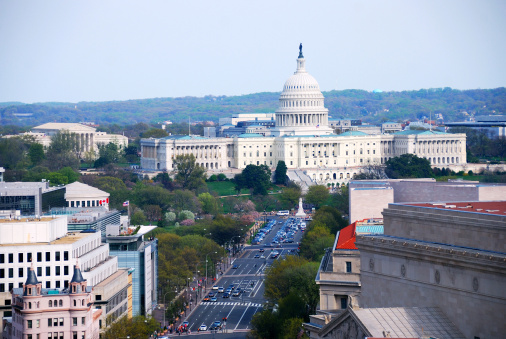Economy
How a Government Shutdown Until Year-End Cripples GDP
Published:
Last Updated:
The last government shutdown in 1995/1996 lasted more than three weeks. The one that is about to start could last longer. The stakes are not just over the budget and President Obama’s health care law. The debt ceiling debate comes soon enough that the leverage Congress and the administration hope to gain could well prolong the time the government is closed for several weeks, if not longer. Many economists expect a federal shutdown, even if very brief, to harm gross domestic product (GDP) fairly quickly.
One estimate of what the shutdown would do comes from Macroeconomic Advisers:
A three-week furlough translates to 0.5 percentage point of growth. If the shutdown lasted all of October — that is, 4½ weeks — the direct effect would be to reduce GDP growth for the quarter by roughly 0.7 percentage point.
That forecast assumes federal workers will get back pay when business as usual returns.
It is unreasonable to take a GDP forecast of weeks of damage and stretch it into months. But it is reasonable to assume the longer the government is shut, the larger the effect will be. The shock to the economy will move from federal worker wages to federal suppliers and to state and local government operations.
It is not unimaginable that GDP improvement could be hurt by 1% if the shutdown lasts until Thanksgiving, and much more than that if it persists until year’s end. A disaster based on that longer period could cut GDP closer to 2%. It would not cause a recession, but it would wipe out most of the gains the U.S. economy has made this year.
The observation that a sharp drop in GDP growth would ripple to employment, consumer spending, real estate (some mortgage approvals would be slowed as part of the shutdown process) and the stock market is simple to make. What is not as easy to guess is what a slowing U.S. economy would do to the rest of the world. The economy of the European Union (EU), already crippled by recession, could be hurt most because it is so fragile and relies so much on exports to the United States. China’s economic growth apparently has tapered off quickly. This is supported by new data from the September HSBC Purchasing Managers’ Index, which posted at 50.2. That means manufacturing in the People’s Republic is barely growing. A sharp fall in exports to the United States would harm China’s manufacturing and might press the index to under 50, which would indicate contraction.
The world’s GDP machine creates a cycle, obviously. What is bad for China and the EU eventually is bad for the United States, as demand for goods and services falters. A U.S. government shutdown does more than affect the American economy. It quickly ripples out to economies across the world.
Credit card companies are pulling out all the stops, with the issuers are offering insane travel rewards and perks.
We’re talking huge sign-up bonuses, points on every purchase, and benefits like lounge access, travel credits, and free hotel nights. For travelers, these rewards can add up to thousands of dollars in flights, upgrades, and luxury experiences every year.
It’s like getting paid to travel — and it’s available to qualified borrowers who know where to look.
We’ve rounded up some of the best travel credit cards on the market. Click here to see the list. Don’t miss these offers — they won’t be this good forever.
Thank you for reading! Have some feedback for us?
Contact the 24/7 Wall St. editorial team.